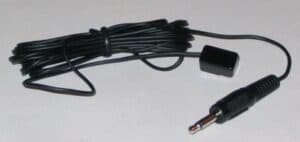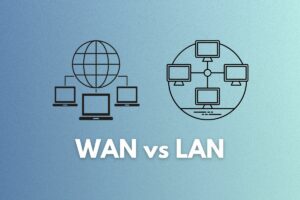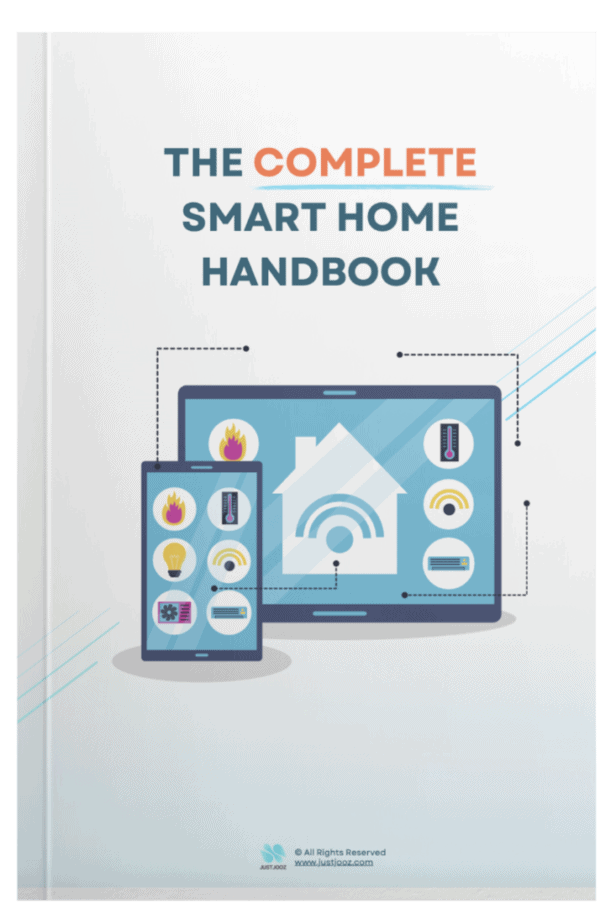Dual Band vs Tri Band Routers: A Comprehensive Guide for Home Use
We’re reader-supported; we may earn a commission from links in this article.
Imagine a world where buffering and slow connection speeds are a thing of the past. As technology progresses, the importance of a stable and fast Wi-Fi connection for modern homes and offices becomes increasingly paramount.
One key decision when it comes to ensuring a smooth online experience is choosing between a dual-band or a tri-band router, or understanding the concept of “dual band vs tri-band.”
But how do you know which one is right for your needs?
Read on to discover the differences between these two types of routers and what factors to take into account when making your choice.
Short Summary
- Dual-band routers provide increased coverage, compatibility with older devices and optimal speed requirements.
- Tri-band routers offer greater speed, performance and simultaneous connection capability for larger homes & offices.
- When selecting a router consider the number of connected devices, type of activities & budget to choose between dual or tri band options.
Understanding Dual-Band Routers
Dual-band routers, including dual band mesh systems, are designed to utilize two frequency bands, namely 2.4GHz and 5GHz, to achieve maximum speed and coverage for modern devices. These routers offer:
- Compatibility with older devices
- Increased coverage for modern devices
- Stable connection for homes with limited distance
- Optimal speed requirements
By utilizing two frequency bands, dual-band routers are able to provide a more reliable connection.
History and Evolution
The need for dual-band routers arose from the insufficiency of the 2.4GHz frequency, which was initially the only frequency utilized by Wi-Fi.
Released in 2009, the 802.11n Wi-Fi standard (also known as Wi-Fi 4) introduced dual-band routers capable of operating on both 2.4GHz and 5GHz bands, providing simultaneous usage of these bands and offering the benefits of dual band wi-fi.
This advancement was a major step forward for Wi-Fi technology, as the 2.4GHz and 5GHz wi-fi bands were crowded with various applications, including cordless phones, Bluetooth gadgets, and home appliances.
The 5GHz band, introduced by the 802.11a standard in 1999, struggled to find success on its own due to its shorter range, slower speed, and the prevalence of 2.4GHz-only clients.
Compatibility and Popular Models
Dual-band routers support a wide range of devices, including gaming consoles, computers, smartphones, tablets, smart TVs, and other Wi-Fi-enabled devices.
There are many popular dual-band router models on the market today, including the TP-Link AC1900, TP-Link AC1750, Asus AC2900, and Netgear N600.
These routers cater to various needs and budgets while providing faster speeds and compatibility with both older and modern devices.
Understanding Tri-Band Routers
Will tri band routers offer several advantages over dual-band routers, including:
- Enhanced speed and performance
- Integrated traffic control for optimized network performance
- Increased bandwidth for faster connections
- Greater area coverage for larger homes or offices
- The ability to provide a Wi-Fi connection to multiple devices simultaneously
These routers are particularly well-suited for large homes and small offices.
The Extra Band
The key difference between dual-band and tri-band routers is the additional 5GHz band found in tri-band routers. This extra band facilitates the operation of two 5GHz channels simultaneously from the 5GHz spectrum, allowing for the handling of multiple connections and enhanced performance.
To make the most out of the two 5GHz bands in a tri-band router, it is recommended to create two separate SSIDs, which enables the manual segmentation of the broadcaster’s Wi-Fi bandwidth for optimal usage.
Ideal Use Cases
Tri-band routers are ideal for:
- Scenarios that require high speeds and small office settings
- Scenarios involving high network congestion, intensive use, and large houses or offices
- Connecting multiple devices without disruption
- Larger houses or offices, where multiple devices need to be connected at once
Their increased bandwidth and enhanced internet speed make them a great choice for these situations.
Comparing Performance: Dual-Band vs Tri-Band
When comparing dual-band and tri-band routers, several factors come into play, such as speed, range, and coverage.
Tri-band routers, like the tri-band mesh system, possess the capability to:
- Manage a greater number of active clients due to the additional channels and broader bandwidth
- Provide more consistent connections
- Offer enhanced top speeds.
However, it is essential to consider your specific needs and evaluate the capabilities of each router type before making a decision.
Speed Differences
Tri-band routers provide faster connections than dual-band routers, especially when multiple devices are connected. The speed remains high and steady when the same number of devices are connected to a tri-band router, whereas the internet speed is significantly reduced when multiple devices are connected to a dual-band router.
This demonstrates the advantage of tri-band routers in maintaining a fast tri-band wi fi connection for multiple devices.
Range and Coverage
Tri-band routers boast double the bandwidth on the 5GHz frequency in comparison to dual-band routers, resulting in greater speed, performance, and consistency. Dual-band routers are more suitable for smaller areas, while tri-band routers offer more coverage, making them ideal for larger homes and offices.
By directing the signal in a specific direction and minimizing interference from other wireless networks, tri-band routers can significantly enhance the range and performance of a Wi-Fi network.
Choosing the Right Router for Your Needs
Selecting the right router for your needs involves considering various factors, such as:
- The number of devices connected to the router
- The type of activities being undertaken
- The size of the area to be serviced
- The budget
To help you make an informed decision, it is essential to delve deeper into these factors and evaluate the advantages and disadvantages of dual-band and tri-band routers.
Dual-band routers are typically less expensive than tri-band routers, but they are limited.
Factors to Consider
When choosing between dual-band and tri-band routers, it is important to take into account the number of devices that will be connected to the router, as this will determine whether a dual-band or tri-band router is more appropriate. Furthermore, consider your internet speed requirements; if you require a very high-speed connection, a tri-band router may be the better option.
Lastly, consider your budget as tri-band routers tend to be more expensive than dual-band routers.
Recommendations
For small families with few devices, a dual-band router is recommended as it provides a stable and fast Wi-Fi connection without the added expense of a tri-band router. On the other hand, large families with multiple devices and high-speed internet users would benefit from a tri-band router, as it offers increased bandwidth and the capacity to connect multiple devices without disruption.
In the end, choosing the right router ultimately depends on your individual needs and preferences.
Advanced Features and Technologies
Modern routers offer cutting-edge technologies that provide increased speeds, improved performance, and enhanced coverage and range. Some of these advanced features and technologies include MU-MIMO, beamforming, and mesh networking, which have revolutionized the way we experience Wi-Fi connectivity in our homes and offices.
These technologies allow for faster data transfer speeds, better signal strength, and improved coverage in larger areas.
MU-MIMO Technology
MU-MIMO, or Multi-User Multiple-Input Multiple-Output, is a technology that enables multiple devices to communicate with a router simultaneously, resulting in enhanced speeds and improved performance. This technology is particularly beneficial for households with many internet-connected devices, as it allows multiple devices to access the same network simultaneously without any reduction in speed or disruption.
The implementation of MU-MIMO technology in modern routers has significantly improved the overall throughput of Wi-Fi networks, providing a faster and more stable connection for all connected devices.
Beamforming and Mesh Networking
Beamforming is a technology enabling routers to direct their signal in a specific direction, thereby improving coverage and range. This technique leverages multiple antennas to transmit and receive signals, which are configured in a specific pattern to facilitate the focusing of the signal in a specific direction. The result is a significant enhancement in the range and performance of Wi-Fi networks, as well as a reduction in interference from other wireless networks.
Mesh networking, on the other hand, is a system of multiple routers connected wirelessly to form a single, unified network. This type of network is ideal for larger households and offices, as it can offer more extensive coverage and enhanced performance compared to a traditional Wi-Fi network. By utilizing mesh networking technology, you can ensure that your Wi-Fi signal remains strong and consistent throughout your entire home or office space.
Summary
In conclusion, both dual-band and tri-band routers have their own set of advantages and disadvantages, with the former being more suitable for smaller homes and fewer devices and the latter offering increased bandwidth and better performance for larger homes and offices with multiple devices.
By taking into account factors such as the number of devices, internet speed requirements, and budget, you can make an informed decision on which router type best suits your needs. Embrace the benefits of modern router technologies like MU-MIMO, beamforming, and mesh networking to elevate your Wi-Fi experience to new heights.
Frequently Asked Questions
What is the advantage of a tri-band router?
Tri-band routers offer the same 2.4GHz and 5GHz bands as dual-band routers, but with the addition of a third 5GHz band for increased speeds, allowing for faster and more reliable connections to more devices.
This increases available bandwidth and reduces network congestion for improved performance.
Is it better to have Wi-Fi 6 or Tri-band?
Given the choice, if you’re looking for better speeds and coverage, a Tri-band Wi-Fi 5 system is the best option for you. You won’t be able to experience the latest Wi-Fi 6 speeds, but it should suffice if you don’t own any Wi-Fi 6 compatible devices.
What is the difference between dual band and tri-band phones?
Dual-band phones only support two frequencies, while tri-band phones support three frequencies and are able to roam between more networks.
A dual-band GSM phone enables users to roam across networks on either frequency, while a tri-band phone is necessary for roaming among operators in Asia/Pacific, Europe, and North America.
How important is tri-band for mesh WiFi?
Tri-band routers provide a greater degree of flexibility, allowing for improved network performance and range. It optimises wireless performance by reducing interference and automatically allocating devices into their own bandwidth lanes, providing faster speeds for even the heaviest network tasks.
This makes tri-band routers ideal for households with multiple devices that require a lot of bandwidth, such as streaming services, gaming consoles, and smart home devices. With a tri-fold.
What is a dual band router?
A dual-band router is a type of router which can transmit and receive data using both 2.4 GHz and 5GHz frequencies, either simultaneously or one at a time. This type of router provides faster speeds and enables the device to deliver a Wi-Fi connection to more devices simultaneously, providing great flexibility.

Justin Chia
Justin is the author of Justjooz and is a data analyst and AI expert. He is also a Nanyang Technological University (NTU) alumni, majoring in Biological Sciences.
He regularly posts AI and analytics content on LinkedIn, and writes a weekly newsletter, The Juicer, on AI, analytics, tech, and personal development.
To unwind, Justin enjoys gaming and reading.







